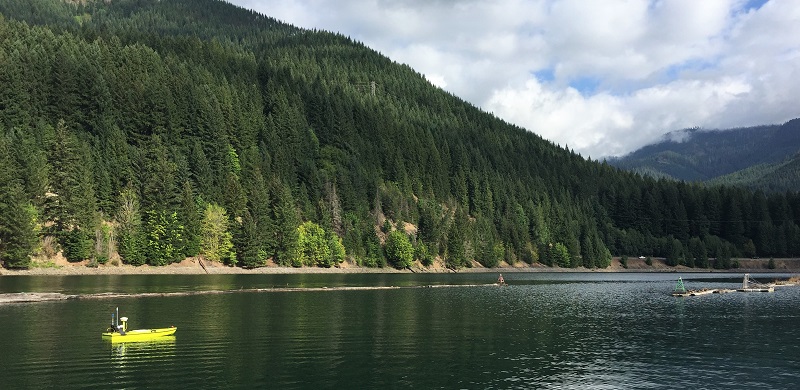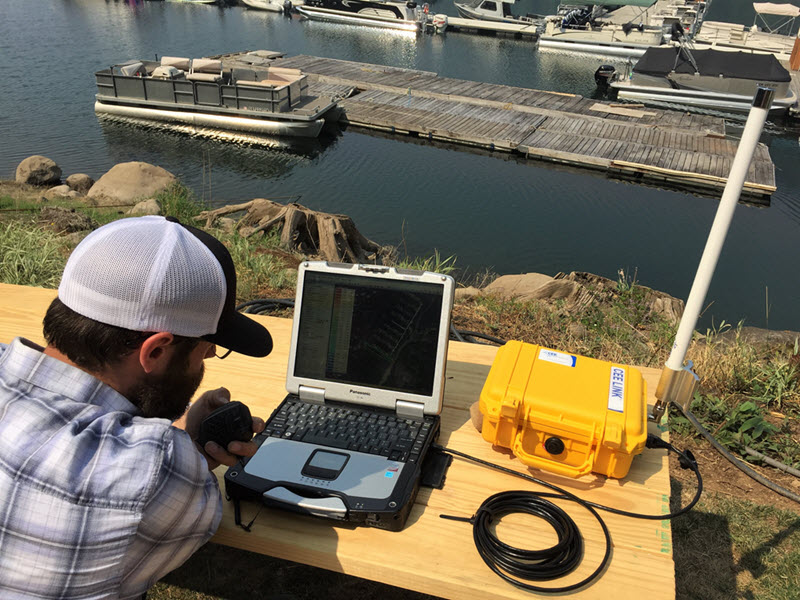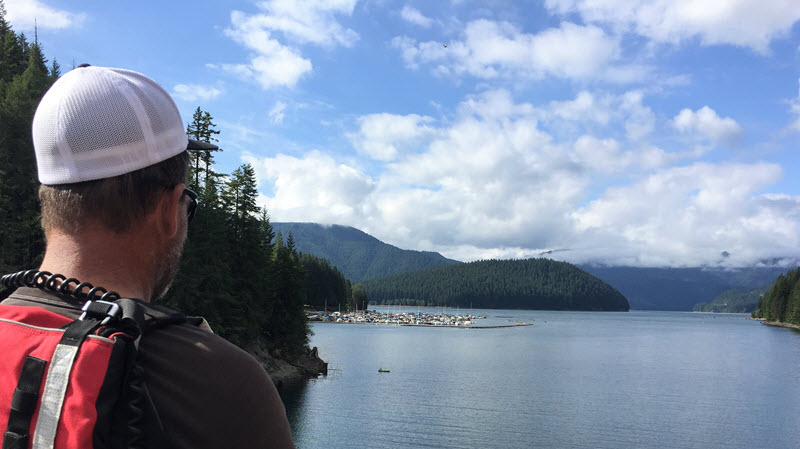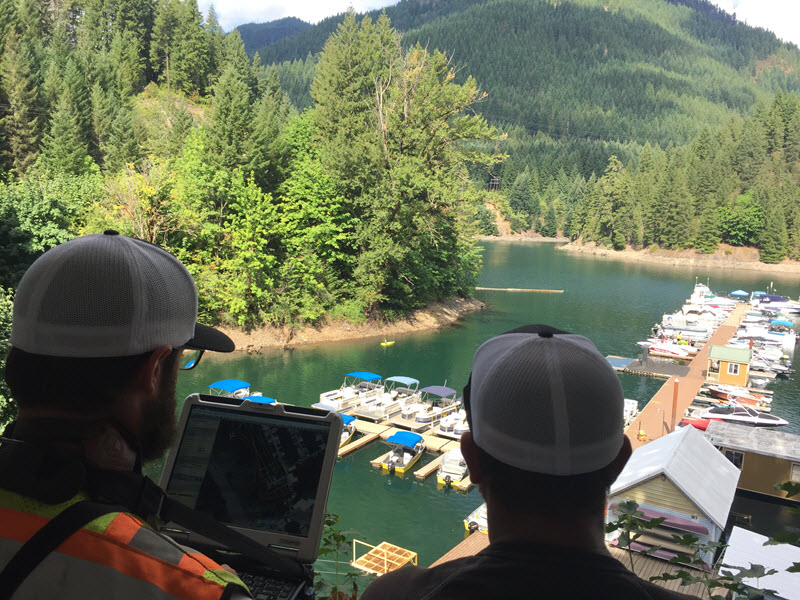As part of their unmanned vehicle surveying program, Statewide’s new CEE-USV hydrographic survey drone boat was in action performing a pre-dredge survey at Detroit Lake in Oregon, USA. Able to weave between the hundreds of moored boats in the marina, the CEE-USV was the perfect way to maximize single beam echo sounder coverage in the confined spaces of the survey where using a regular manned survey boat would have made it very difficult or impossible to achieve the same survey quality.
Local control was provided for the survey using a Trimble R8 GNSS base station with UHF radio, and a Trimble R8 rover was used on the USV. While the CEE-USV was supplied with a basic grade Hemisphere Eclipse GNSS receiver capable of submeter to decimeter level performance, Statewide’s configuration allowed for cabled or Bluetooth GNSS data input to the USV from their Trimble R8 or R10 receivers as the primary source of high quality centimeter-grade position and elevation for their surveys.
The first marina allowed a boat launch close to the survey location with a convenient base for operations. The shore station offered remove viewing of the data while the operator on the dock was driving the boat along the survey pattern, separately connected to the CEE-USV with a second field acquisition PC. The network radio system used in the CEE-USV allows multiple users to connect at the same time and view or acquire the same data, as easy as connecting to a coffee shop wireless network! The dedicated CEE LINK base station includes a high power radio with high gain antenna to receive data even if the vehicle is located behind obstructions, in this case moored boats. Real time review of sounding quality is possible throughout data acquisition, in this case using Eye4Software Hydromagic. So, there is no danger of leaving the job site with inadequate data quality or coverage.
Moving to the second marina required the USV to be driven in down the lake. Fortunately a highway bridge between the two marinas allowed the operator to relocate the drone vessel.
With a high vantage point, much of the second marina could be surveyed from the shore observation and control location.
With the echo sounder removed from USV, single point “fill in” soundings taken from the docks completed the survey.




